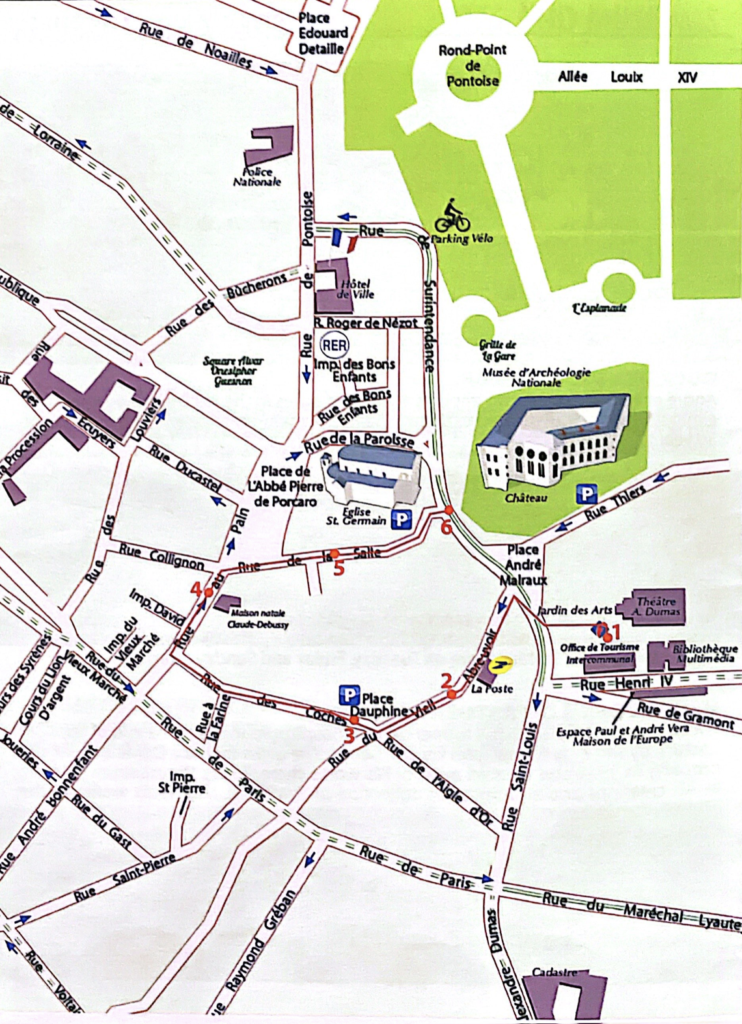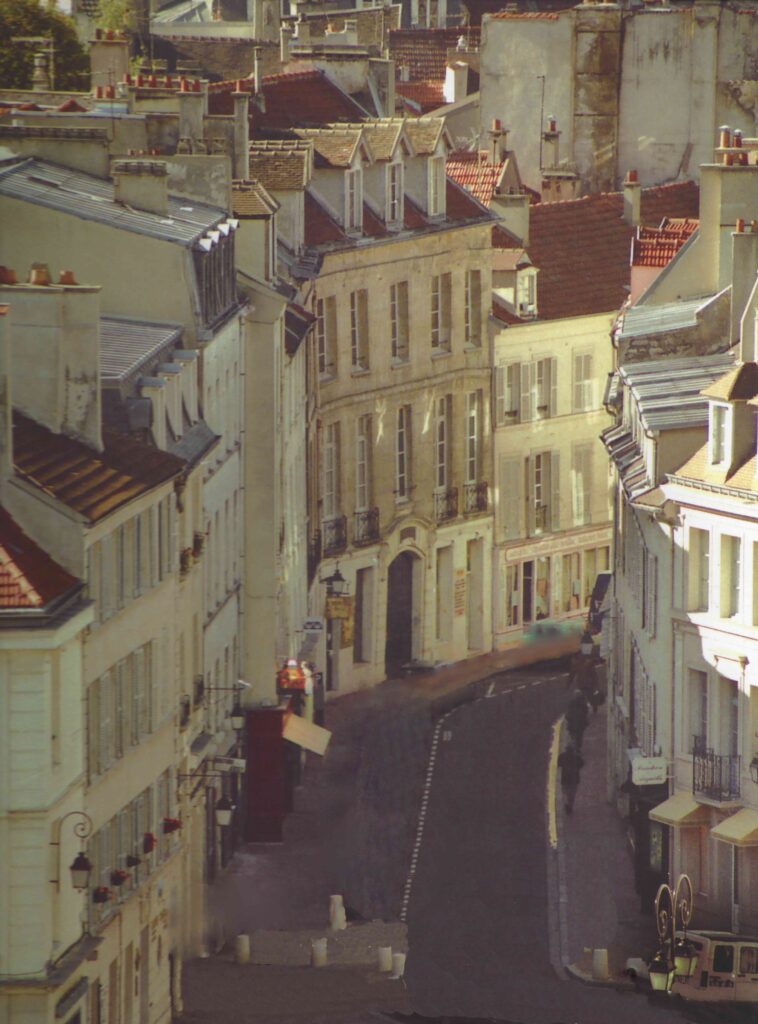
1.DEPART:Office de Tourisme,Villa Eugénie-Désoyer
Villa Eugénie-Désoyer, Jardin des Arts, 3 rue Henri IV

Welcome! Mr. Léon Désoyer,entrepreneur, patron and mayor of Saint-Germain-en-Laye in the early 20th century, and his wife Eugénie, benefactor of the town, welcome you to their home bequeathed to the town in 1929. Their busts are above the interactive table. Opposite them, the two works of art come from the council collections and represent Ranavalona IIl, the last queen of Madagascar, and the Antiquaire du Pont des Arts,by Honoré Icard.
Today, Villa Eugénie-Désoyer is home to the Saint Germain Boucles de Seine Intermunicipal Tourist Office and Café des Arts on the ground floor. On the first floor, the Royal Apothecary has a remarkable collection of objects from the old hospitals of the town. It can be seen during the opening hours of the building: take the stairs or lift to the 1st floor and press the switch to the right of the glass door. On the left, after the door, a second small glass room houses ancient objects for the preparation of remedies. Visit 1 Saturday per month, only by reservation.The apothecary is always visible from the outside during building opening hours.
2.Rue du Vieil Abreuvoir
At the street entrance there was a large watering pond but it was demolished in the 18th century to make way for the « coche », the public vehicle that was the ancestor of the “diligence »stagecoach.

3.Rue des Coches
(stagecoaches) travelling to neighbouring towns, including Paris and Versailles.
No.17:Hôtel de Guise:this private mansion was owned by Henri II de Lorraine, Duc de Guise and grandson of the “Balafré » (“slashed face »). Albert Alain, the famous organist from Saint-Germain-en-Laye, was also born here.
On the left, the «rue des Vieilles Boucheries» was, as the name suggests, where the meat market took place. A little further on, we find the «rue à la Farine», which was where the Grain and Flour Hall was created by Francois I.
4.Rue au Pain
So called since 1667, it has been long considered as the main street in the town. It takes its name from the bakers who set out their stalls there on market days.
No. 38: the birthplace of the composer Claude Debussy, who was born there on 22 August 1862.
5.Rue de la Salle
Thus named since 1640 in honour of the captains who governed the town, but also because it housed a hall (« salle ») where the residents would meet.
No. 14:One of the oldest houses in the town. Half-timbered, it is typical of the late Middle Ages. The facade has been restored.
No. 18: Hôtel des Maréchaux de Villeroy. Owned by Nicolas de Neuville, governor under Louis XIV, and later by his son François, who was also a governor but under Louis XV.
6. Place Charles de Gaulle You are standing opposite:
· Old-Castle : Saint-Germain-en-Laye was the residence of numerous kings of France, including Saint Louis, Francois I and, of course, Louis XIV. Each left their mark and the castle’s architecture has evolved greatly over the centuries. Now the National Archaeology Museum, the Old-Castle is home to an exceptional collection of archaeological objects from France and the four corners of the world. Near the castle you can see the gardens of the National Domain.
·Saint-Germain church, with its neo-classical stye, was consecrated in 1827. Inside, painter Ingres, and the tomb of King James II of England (VII of Scotland), cousin of 8 Louis XIV, who died in exile in Saint-Germain-en-Laye in 1701.